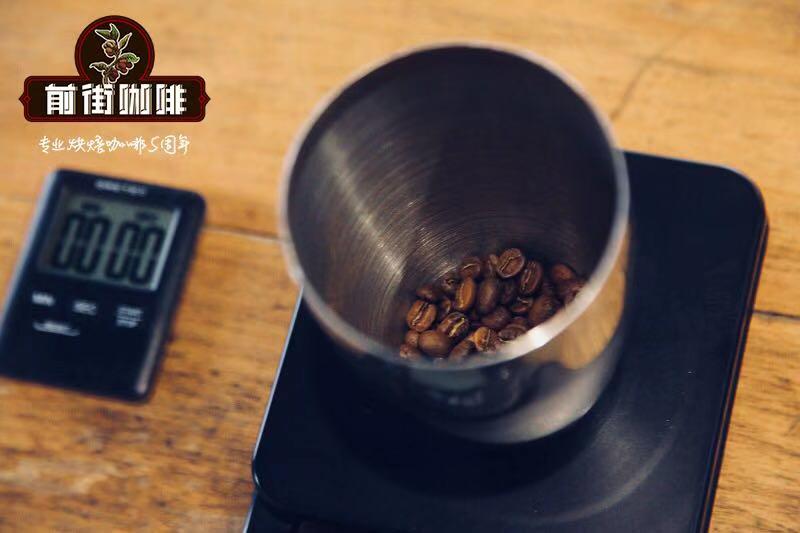Unique monsoon treatment method to understand that India can also handle coffee by the monsoon.

Professional coffee knowledge exchange more coffee bean information please follow the coffee workshop (Wechat official account cafe_style)
Introduction to Qianjie-Indian Monsoon Coffee
In fact, India is the oldest coffee producer in Asia. Although Indian coffee did not flourish until it was colonized by the British in the 19th century, it had a history of about two hundred years before that.
In 1870, due to the influence of leaf rust and the high demand for tea in the market, many farms capable of producing high-quality coffee changed to grow tea one after another, dealing a heavy blow to India's coffee industry. Although in the past, Indian coffee continued to develop, but the planting and research focused on giving priority to disease resistance, taste and flavor later Robusta and its extended varieties, coupled with India because of its low altitude and climate type, so that the adaptability of Robusta output is extremely high, but also because its flavor is cleaner than that of Robustan produced in other producing countries, it makes Robusta of India popular among coffee roasters. It is often used in Italian formula beans.
The better-known Indian coffee is the wind-stained Monsoon Malabar, which is now a precisely controlled treatment, but it originated by accident at first.
During the British colonial period, coffee was packed in wooden cases and exported to Europe. These coffees experience wet weather during the monsoon period during transportation, causing the coffee to absorb a lot of moisture and have a huge impact on the coffee delivered to its destination. At that time, a transportation took several months, and the raw beans were placed on the bottom of the barn, absorbing the moisture and salty taste of the sea. The raw beans had already gone bad when they arrived in Europe, the color turned yellow, and the acidity of the coffee almost disappeared, but it developed a very unique taste.
After that, although the navigation and shipbuilding techniques have improved, and the delivery time has been shortened, the flavor of this monsoon-treated coffee has been affected. So this kind of coffee, called wind stain treatment, will be carried out in the factory.
Wind stain treatment is only used in sun-treated coffee, the color of the coffee after wind stain is light and fragile. This kind of wind-stained beans is not easy to bake evenly, coupled with the fragile characteristics, resulting in coffee cooked beans often have the problem of poor appearance and broken beans. However, this kind of damaged beans is different from the general low-grade coffee defective beans, which will not affect the flavor.
In the process of wind stains, coffee usually loses acidity, but adds a strong and wild aroma, which has a polarized evaluation in the coffee industry. Some people regard this flavor as its characteristic, while others think that it is the defective smell caused by the treatment process.
In short: Qianjie is a coffee research hall, happy to share the knowledge about coffee with you, we share unreservedly just to make more friends fall in love with coffee, and there will be three low-discount coffee activities every month. The reason is that Qianjie wants to make more friends drink the best coffee at the lowest price, which has been Qianjie's tenet for 6 years!
END
Important Notice :
前街咖啡 FrontStreet Coffee has moved to new addredd:
FrontStreet Coffee Address: 315,Donghua East Road,GuangZhou
Tel:020 38364473
- Prev

What are the characteristics of Mexican organic coffee? what are loving organic coffee beans?
Professional coffee knowledge exchange more coffee bean information Please follow the coffee workshop (Wechat official account cafe_style) Front Street-Mexico Organic Coffee introduction in many parts of the world, growers use pesticides to control the growth of coffee pests, often humid, foggy coffee at high altitude is more vulnerable to insects, so growers often use insecticide treatment. Many people think that during the growth of coffee
- Next

Is there coffee beans grown in India? Indian wind stains Malabar coffee flavor characteristics
Professional coffee knowledge exchange More coffee bean information Please pay attention to coffee workshop (Weixin Official Accounts cafe_style) Front Street-India Wind Stain Malabar Coffee Introduction India Climate The ideal climate conditions for coffee bean growth are temperatures between 2 - 3 and 28 degrees Celsius, rainfall between 1.5 and 2.0 meters, and a dry season of 2-3 months after the rainy season. Cold temperatures near freezing point are not suitable for conditions
Related
- Beginners will see the "Coffee pull flower" guide!
- What is the difference between ice blog purified milk and ordinary milk coffee?
- Why is the Philippines the largest producer of crops in Liberia?
- For coffee extraction, should the fine powder be retained?
- How does extracted espresso fill pressed powder? How much strength does it take to press the powder?
- How to make jasmine cold extract coffee? Is the jasmine + latte good?
- Will this little toy really make the coffee taste better? How does Lily Drip affect coffee extraction?
- Will the action of slapping the filter cup also affect coffee extraction?
- What's the difference between powder-to-water ratio and powder-to-liquid ratio?
- What is the Ethiopian local species? What does it have to do with Heirloom native species?

